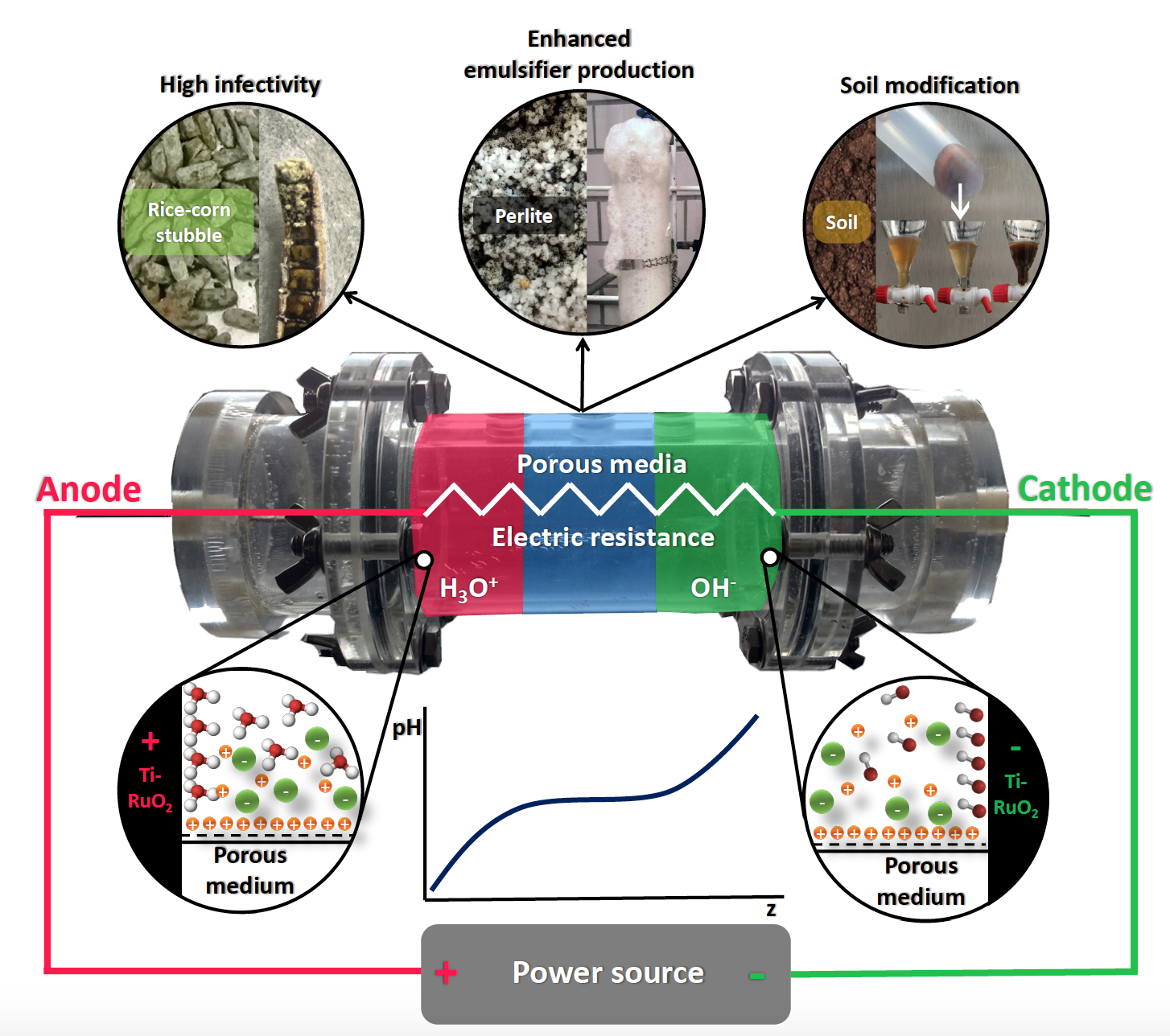 |
|
The imposition of electric fields on a porous media has been a useful tool for biotechnological processes improvement, mainly in environmental engineering; however, the success in its reproducibility depends on the standardized methodology rather than empirical results. This work describes three experimental cases: Aspergillus brasiliensis attached to perlite for emulsifier protein production, Metarhizium anisopliae as a biologic control of insect pests and the characterization of a hydrocarbon contaminated soil. The standardized methodology is independent of the biotechnological purposes and consists of: (i) establishment of current density in which porous media behaved as an electric resistance (0–2.5, 0-0.6 and 0-0.85 mA cm-2, for perlite, rice-corn mixture and soil, respectively). (ii) establishment of a current density in which cell potential is constant, to make sure that no gradient of nutrients concentration is formed and (iii) pH gradient evaluation as a consequence of water oxidation/reduction electrochemical reactions and the charge transport capability across the porous media. As a result of the aforementioned standardization three sections of packed porous media on electrochemical cell would be obtained: anodic (acidified), middle (neutral) and cathodic (alkalinized), which have different physicochemical properties and promote also different metabolic responses when they are used as supports for solid-state culture.
Keywords: electric field, solid surface modifications, metabolism modifications, pH gradient, electric resistance.
|
|
 |

